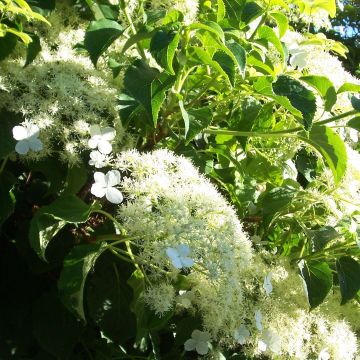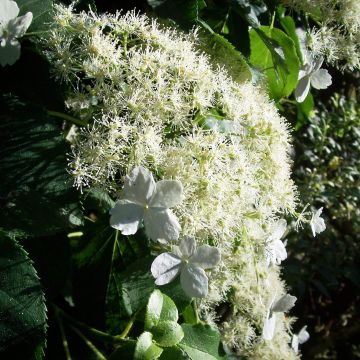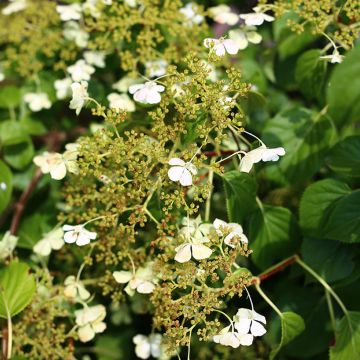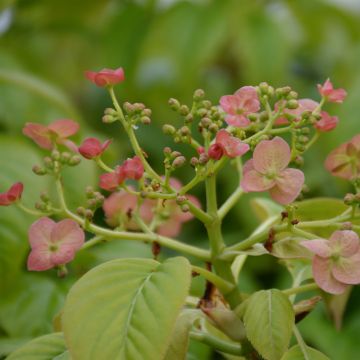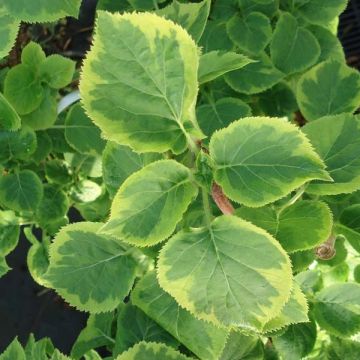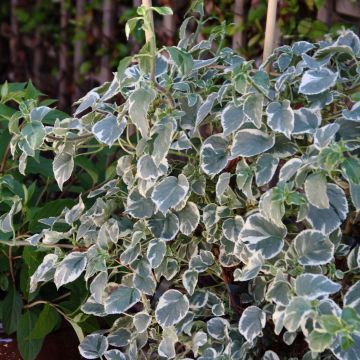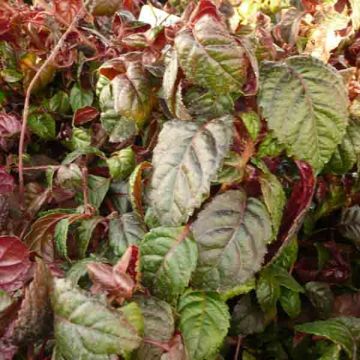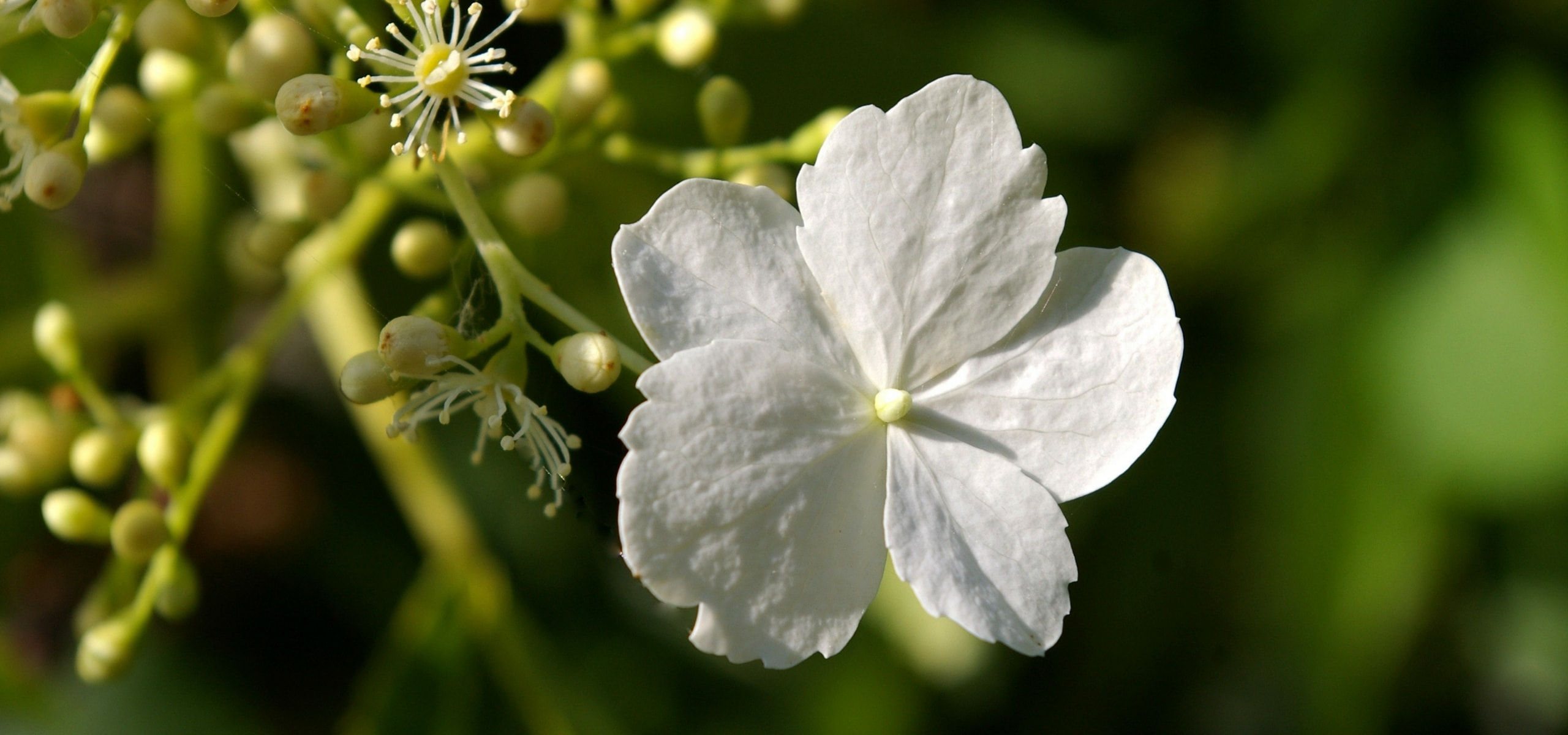
Propagate climbing hydrangea or Hydrangea petiolaris
Our tips to multiply them easily!
Contents
The Climbing Hydrangea or Hydrangea petiolaris is a very vigorous plant native to Asia. It offers a delicate white flowering from May until mid-summer. To propagate it, the technique is simple and economical: proceed by cuttings. Discover when and how to proceed to obtain beautiful cuttings!
→ Also find all our climbing hydrangeas (Hydrangea petiolaris, Hydrangea seemanii and Schyzophragma sp.) in our online nursery.
When to propagate Hydrangea petiolaris?
The best time to propagate climbing hydrangea is late summer, in August or September, when the young shoots begin to mature, meaning they become less tender and more woody.
Necessary materials
- Pruning shear that is well sharpened and disinfected for clean cuts and to prevent diseases
- Pots or buckets
- Light and draining compost : a mix of compost + sand or perlite or special compost for sowing and propagation by cuttings
- Rooting activator to encourage root development (facultative)
- Sprayer or watering can with a fine rose
- Mini greenhouse or transparent plastic bag to maintain humidity and speed up recovery
- Small stakes or sticks to prevent the plastic bag from touching the cuttings
Discover other Climbing hydrangeas
View all →Available in 1 sizes
Available in 4 sizes
Available in 2 sizes
Available in 1 sizes
Available in 1 sizes
Available in 1 sizes
Available in 1 sizes
Available in 1 sizes
Available in 1 sizes
How to propagate climbing hydrangea?
Cuttings can be done in a few simple steps:
- Prepare a pot by filling it with potting soil mixed with sand.
- Using a pruning shear, cut 15 cm long cuttings from the tips of branches from the current year that have not yet flowered but are starting to become less tender. You can choose several to increase your chances of success.
- Cut the top end of the cutting,
- Remove the leaves at the base to leave only a few leaves on the upper part.
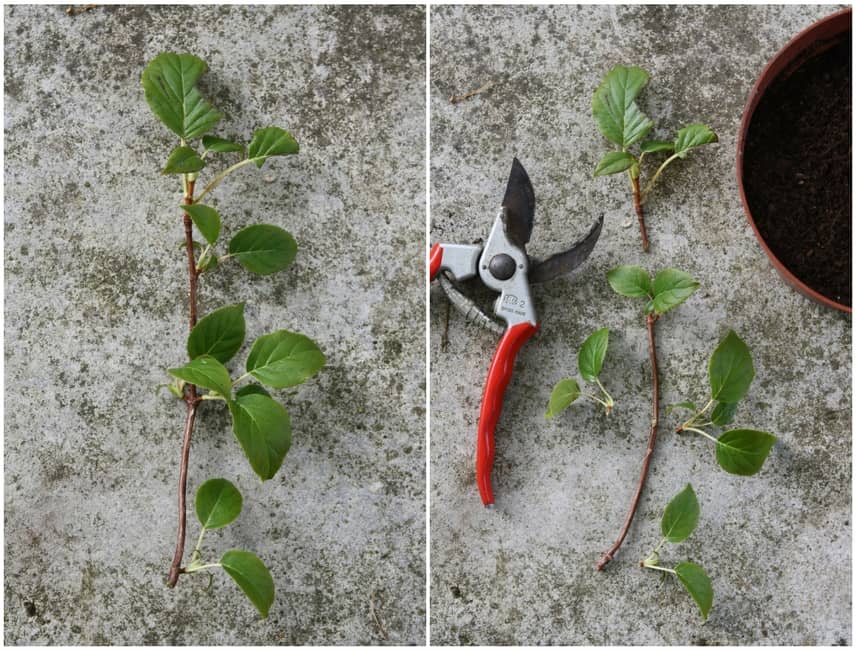
Choose a branch that is starting to harden / cut the top end and the lower leaves
- Then dip the base of the cutting in a little rooting hormone, which will help roots to develop, then plant them in the substrate, about ten centimetres apart.
- Water regularly, but without excess.
- To maximise the success of the cuttings, place them in a mini greenhouse or cover them with a transparent plastic bag held up by stakes, which will create a greenhouse effect by retaining heat and moisture, thus promoting rooting.
- The cuttings will thrive outside and in the shade, until winter arrives when you can then place them in a frost-free environment, ideally in a cold greenhouse.
- Climbing hydrangea cuttings generally start to produce roots after 4 to 6 weeks, provided that a constant humidity and shaded exposure are maintained.
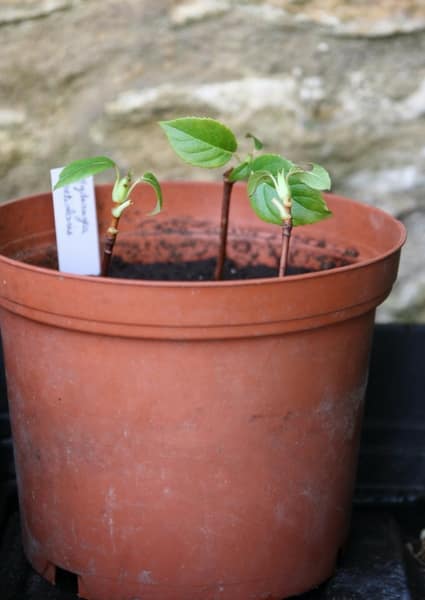
Your cuttings are ready, all that’s left is to be patient!
Planting your young cutting in the garden
From the following spring, you can plant your Hydrangea petiolaris in the ground. Place it in the shade, as it is a hydrangea that cannot tolerate full sun! It will thrive in rich, cool, and deep soil, but not too acidic.
It clings to walls by itself thanks to its climbing roots, and therefore does not require additional trellis to grip onto.
We recommend adding organic matter (for example, well-decomposed manure or compost), which you will mix with the planting soil. Be sure to water well after planting.
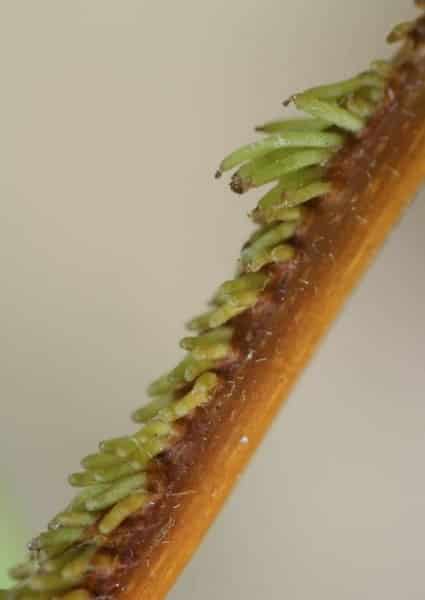
Climbing hydrangea, climbing roots
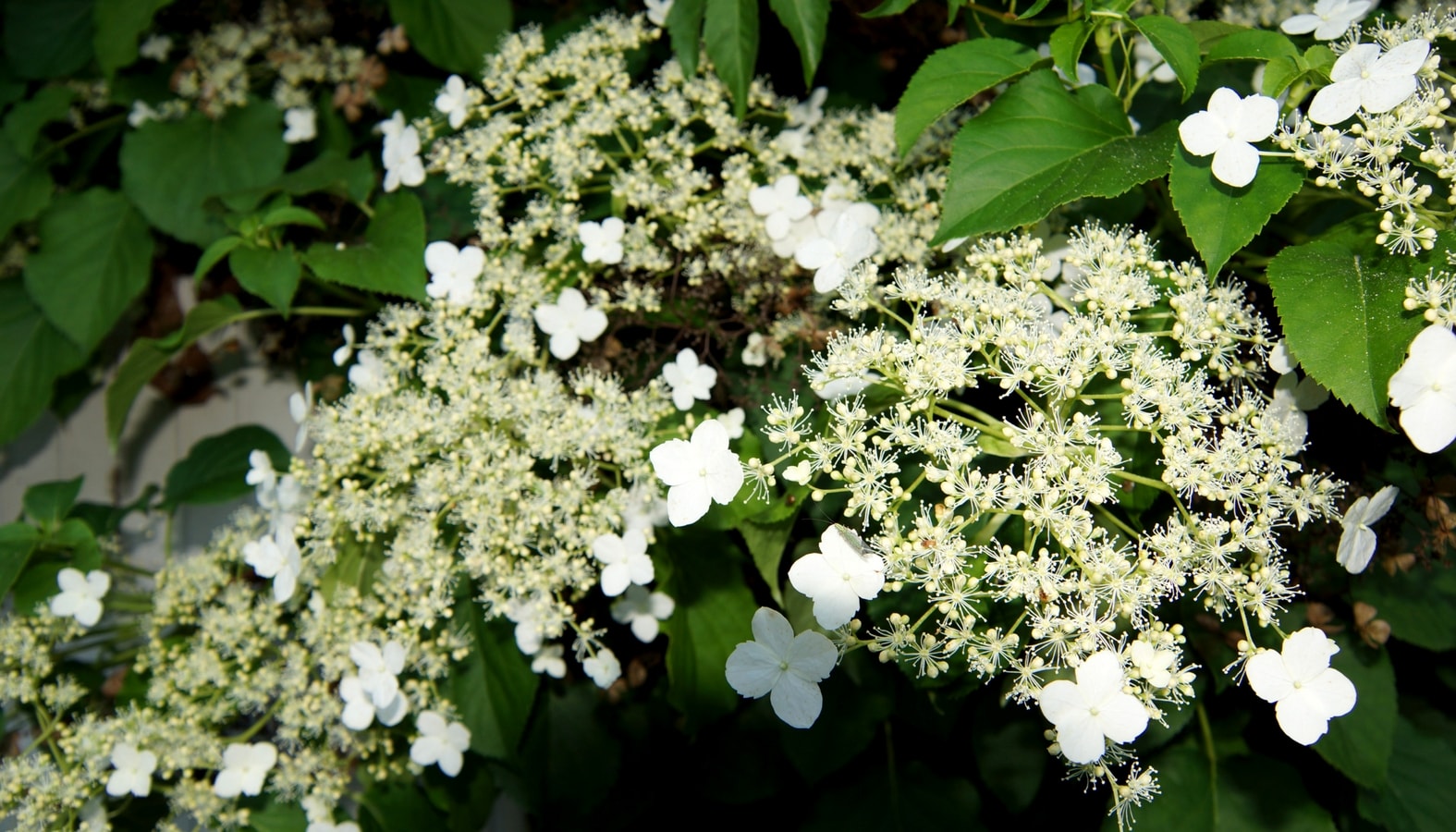
To learn everything about propagation by cuttings
Discover our article: “Propagation by cuttings, everything you need to know about the different techniques and our tips for successfully taking your cuttings”
- Subscribe!
- Contents































